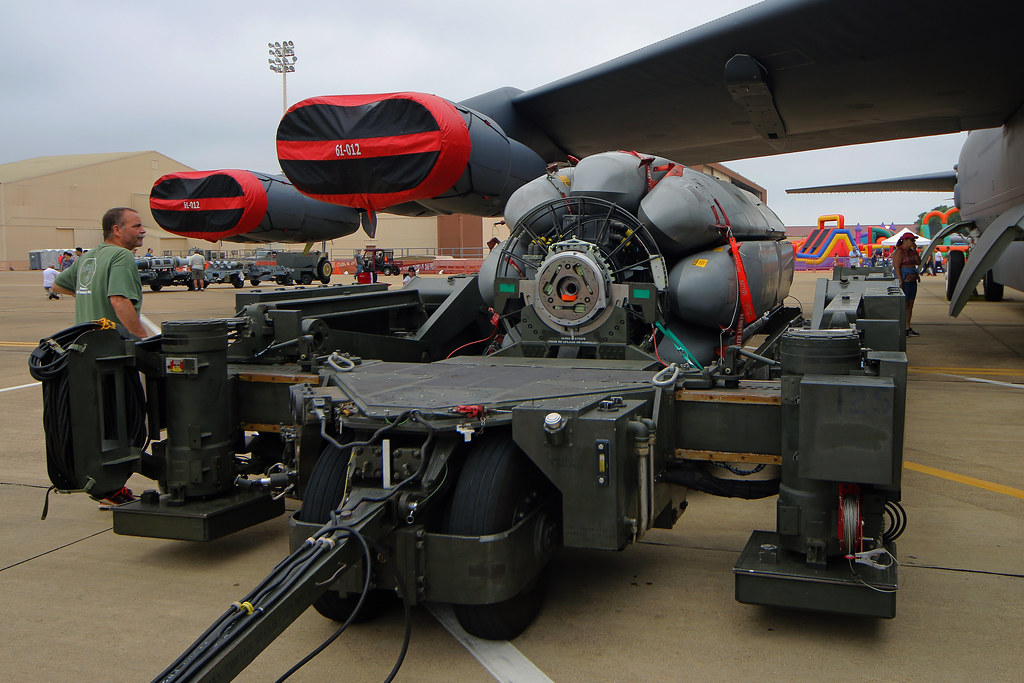- Joined
- Feb 9, 2022
- Messages
- 294
- Reaction score
- 502
I'm in very early stages of planning for building a 1/2 scale AGM-86A Boeing ALCM Cruise Missile. I'm starting this thread as I am super interested in non-traditional rocketry airframes that are most easily described by various missiles/rockets - namely drones and cruise missile structures.
Eighteen years ago, I finished getting my Level 2 and started working in this area. Kids and career got in the way (as they do) and I was never able to explore this interesting area of rocketry. At the time I was fixated on a JASSM, which has a very different airframe than anything we see in rocketry. Here are the two photos that really inspired me:


Here's a picture of an AGM-158 JASSM that I was building (you can see the level 2 7.5" Bullpup in the background ).
).

Obviously this never flew, but over the last few years I've renewed my interest in going down this road. I've decided that I am going to pursue a 1/2 scale AGM-86A ALCM Boeing Cruise Missile. According to Wikipedia (and actually viewing this both at the US Air Force Museum and Smithsonian), this missile is 14' long. So the model I would create would be in the neck of the woods of 7' long. Really a perfect size for level 2 type motors and a size that would be good for a technical test platform for our hobby.
There are going to be people that are going to be critical of this idea and will say "this can never be done in rocketry", but both Estes and Centuri solved this as very small models with plastic shells that fit around a standard body tube and sticking a bunch of clay in the nose cone to bring the CG up. Wings and fins that are in "unusual" places are common in rocketry today: Jayhawks, X-15, Bomarc - we've already been near this with many existing models. Rocket powered gliders with unusual characteristics commonly show up. I'm sure many of us never thought we would see things like Vector Control and Arduino controlled, finless models. So, yeah, this will happen.

The fuselage is obviously inspired strongly by stealth, but so many modern platforms keep these same ideas. Some are shown here (AGM-136 Tacit Rainbow on the left and the AGM-129 Advanced Stealth Cruise Missile on the right):


So what are your thoughts? I've never seen anyone go here in modelling or flight.
Eighteen years ago, I finished getting my Level 2 and started working in this area. Kids and career got in the way (as they do) and I was never able to explore this interesting area of rocketry. At the time I was fixated on a JASSM, which has a very different airframe than anything we see in rocketry. Here are the two photos that really inspired me:


Here's a picture of an AGM-158 JASSM that I was building (you can see the level 2 7.5" Bullpup in the background

Obviously this never flew, but over the last few years I've renewed my interest in going down this road. I've decided that I am going to pursue a 1/2 scale AGM-86A ALCM Boeing Cruise Missile. According to Wikipedia (and actually viewing this both at the US Air Force Museum and Smithsonian), this missile is 14' long. So the model I would create would be in the neck of the woods of 7' long. Really a perfect size for level 2 type motors and a size that would be good for a technical test platform for our hobby.
There are going to be people that are going to be critical of this idea and will say "this can never be done in rocketry", but both Estes and Centuri solved this as very small models with plastic shells that fit around a standard body tube and sticking a bunch of clay in the nose cone to bring the CG up. Wings and fins that are in "unusual" places are common in rocketry today: Jayhawks, X-15, Bomarc - we've already been near this with many existing models. Rocket powered gliders with unusual characteristics commonly show up. I'm sure many of us never thought we would see things like Vector Control and Arduino controlled, finless models. So, yeah, this will happen.

The fuselage is obviously inspired strongly by stealth, but so many modern platforms keep these same ideas. Some are shown here (AGM-136 Tacit Rainbow on the left and the AGM-129 Advanced Stealth Cruise Missile on the right):


So what are your thoughts? I've never seen anyone go here in modelling or flight.










